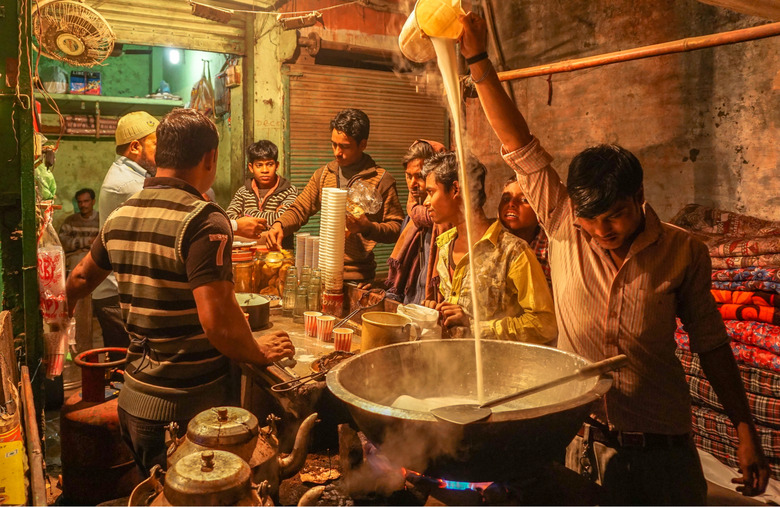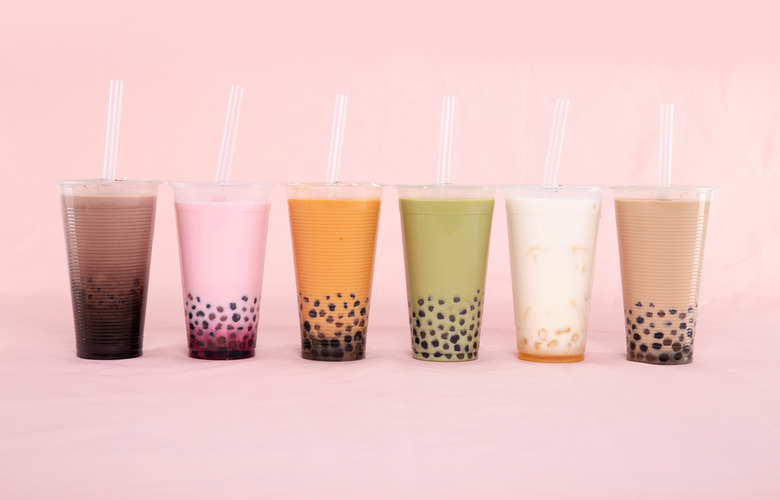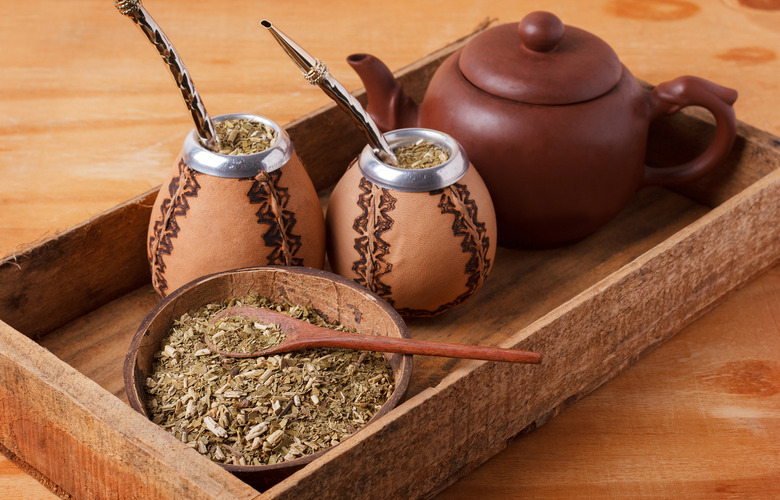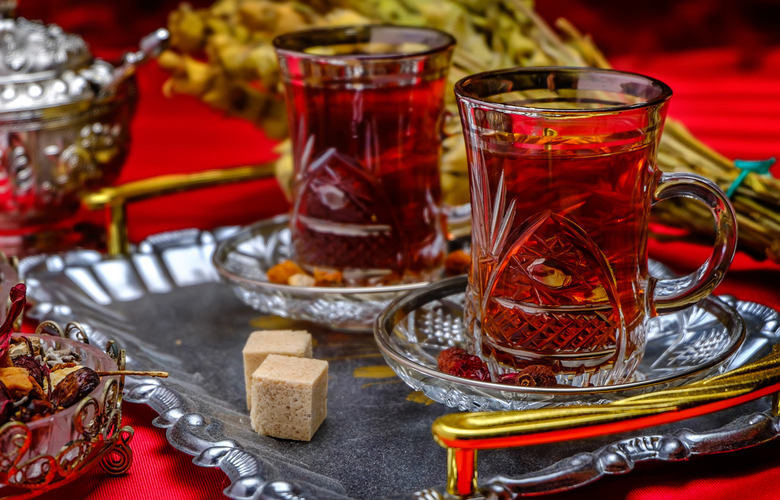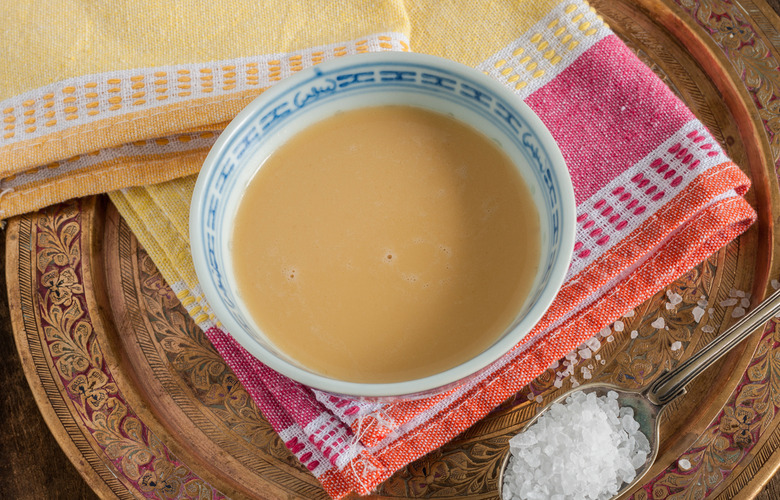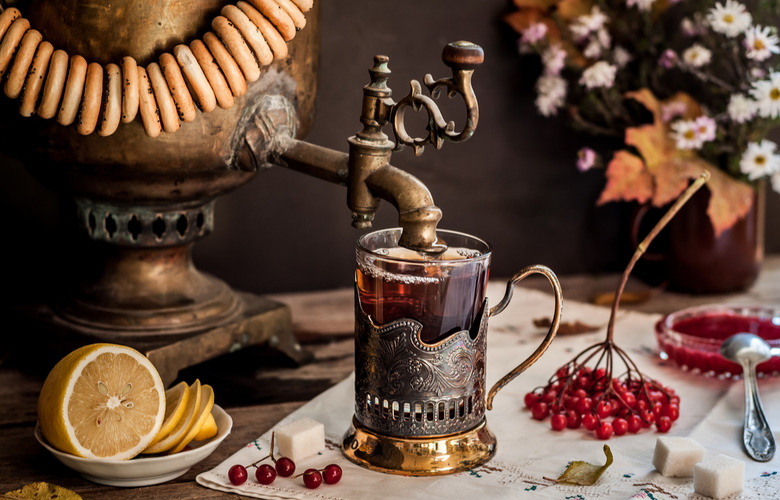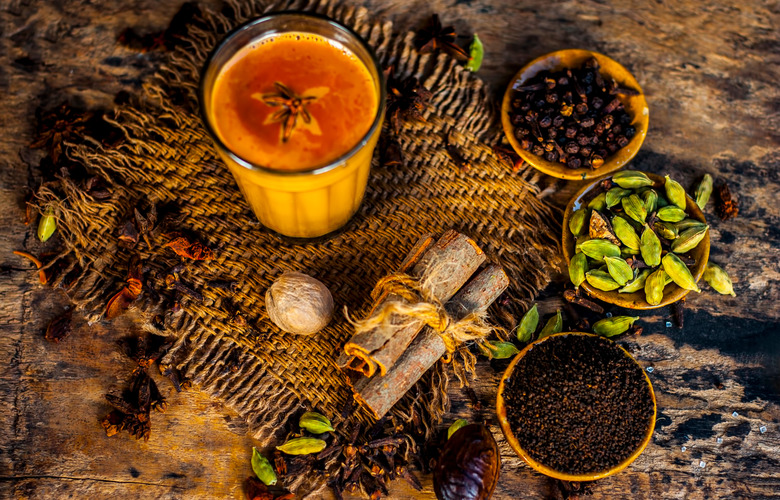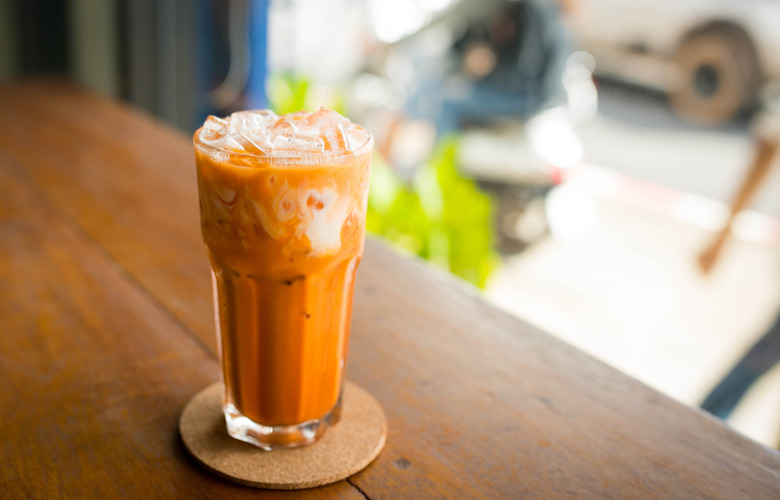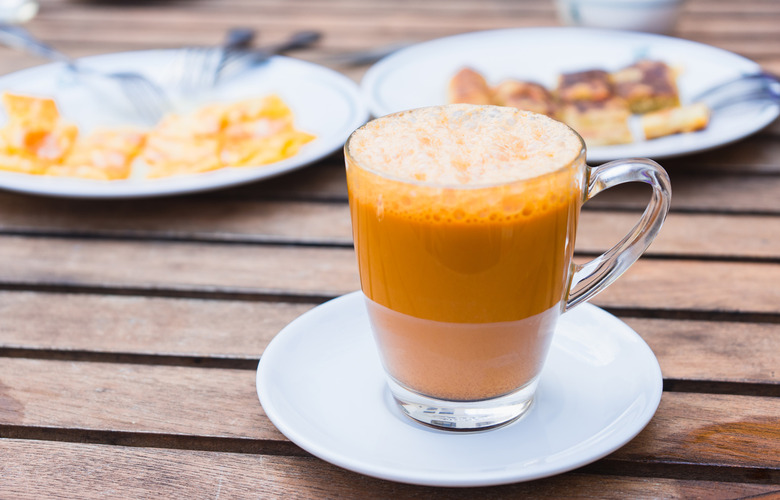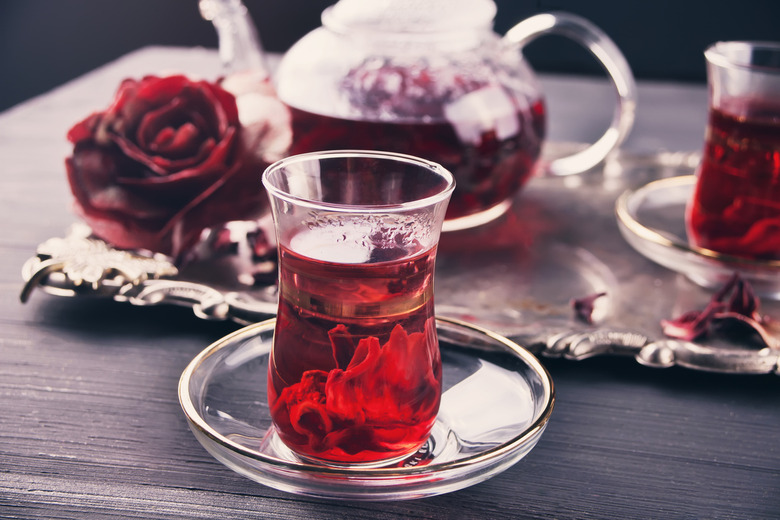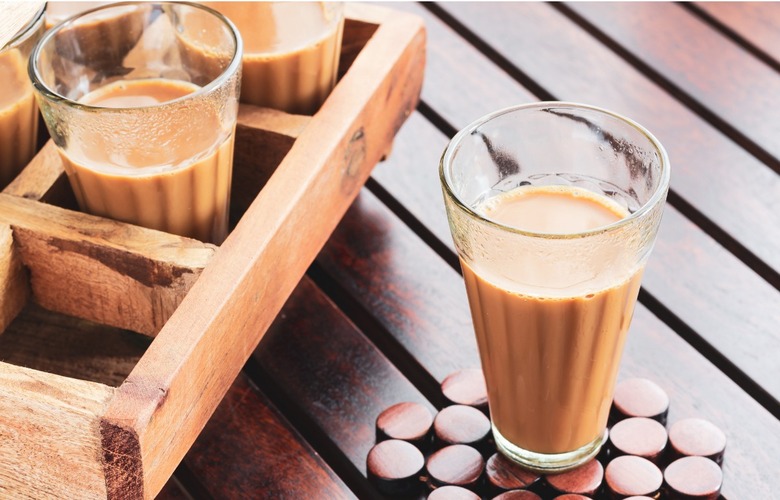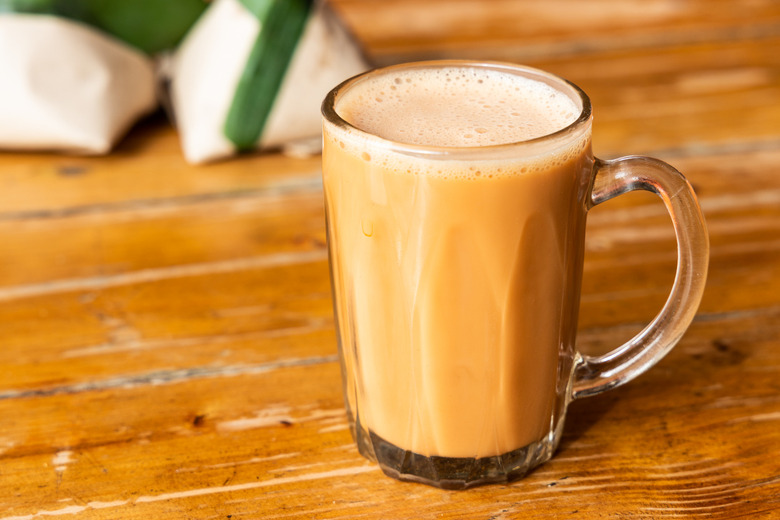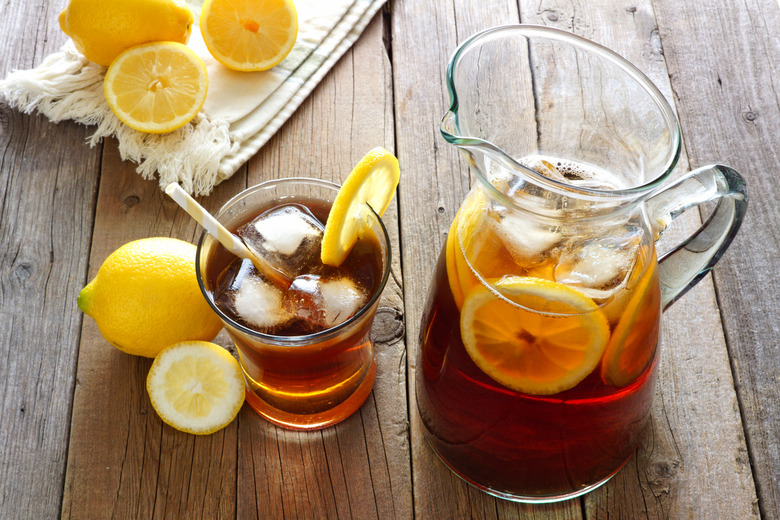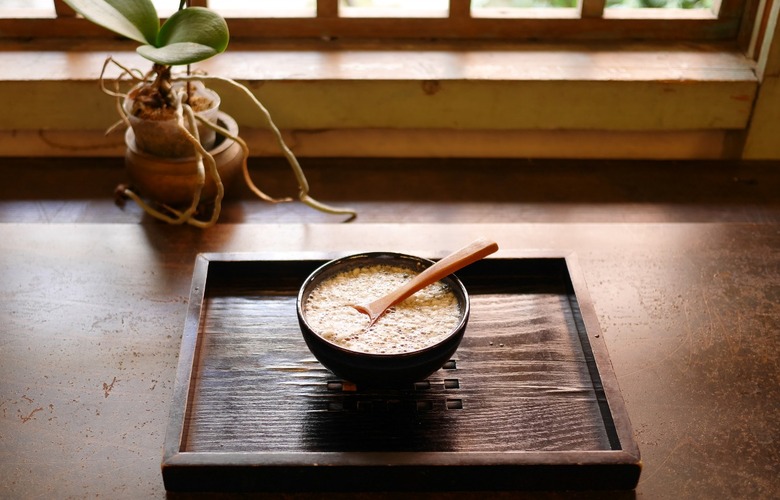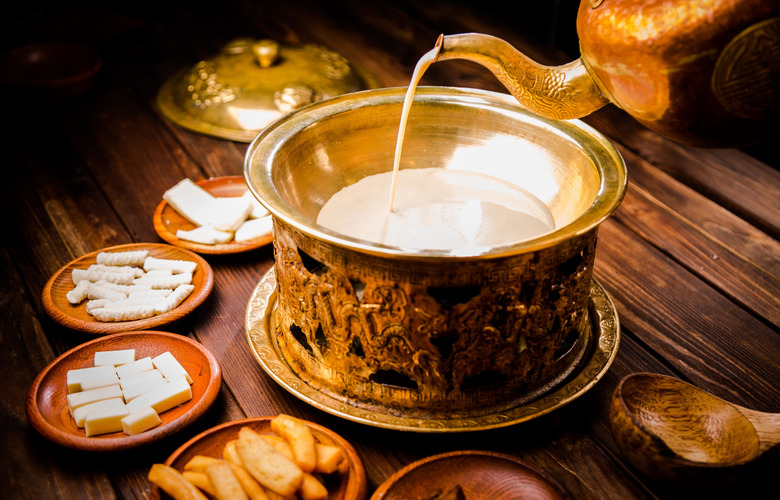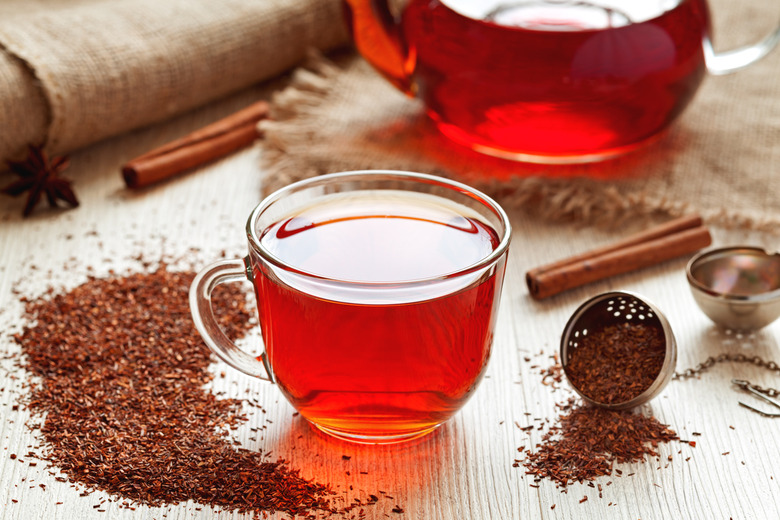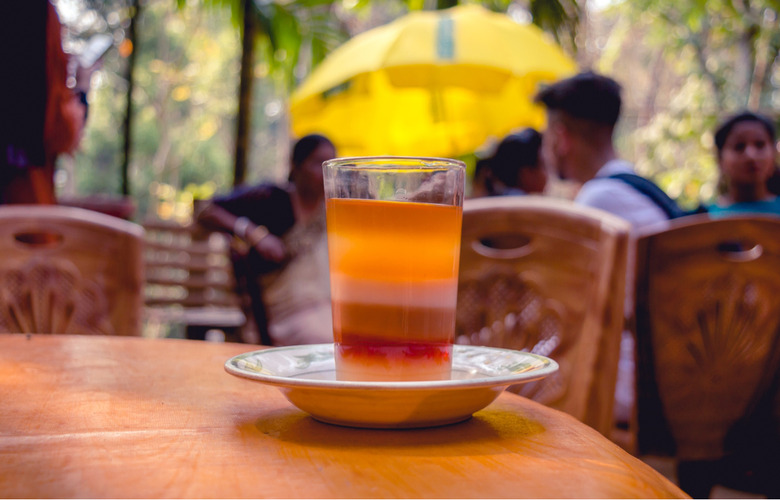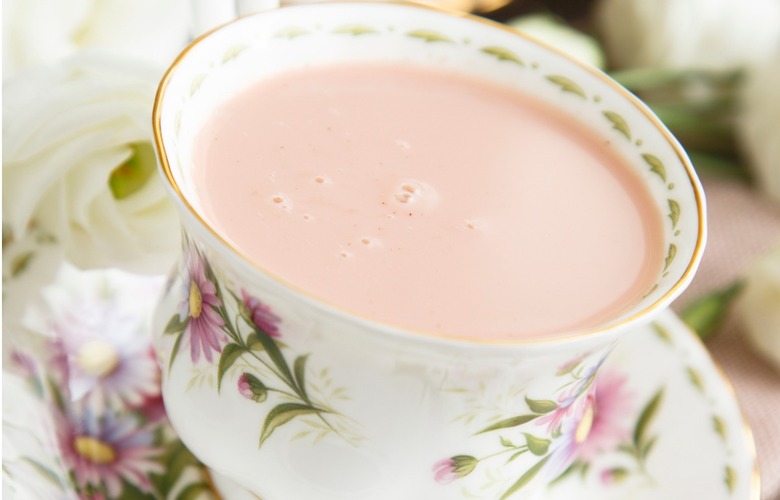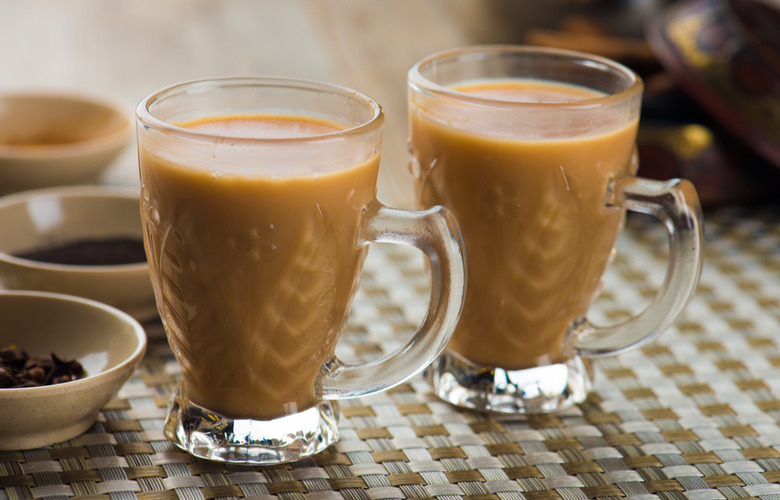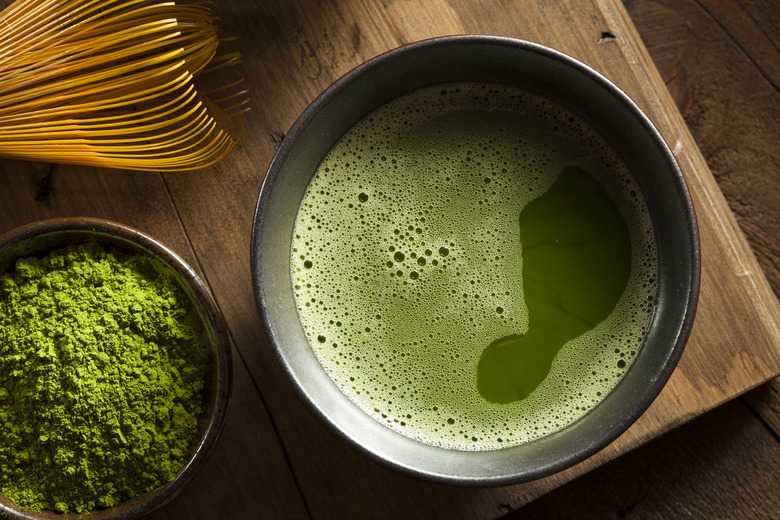From Chai To Rooibos: Tea Around The World
Although coffee reigns supreme in much of the United States, tea is the most widely consumed drink in the world after water. With so many different types of teas — from black to green to oolong — and so many different ways of brewing them, cultures around the world have come up with many amazingly delicious variants of this aromatic drink, both hot and cold.
A great way to start your day, enjoy an afternoon break, or finish off the evening, tea has many benefits. Aside from the joy of good cuppa, many teas have been found to settle upset stomachs, reduce blood pressure or even decrease your chance of a heart attack. With the first cup dating back to at least the first century B.C., there's a reason tea is still so popular throughout the world.
Bubble tea
Popularly called boba (or boba naicha as is its full name in Mandarin), bubble tea was invented in Taiwan in the 1980s but has become a popular drink throughout East and Southeast Asia, as well as North America. Made with or without milk, it typically contains green, black or oolong tea as well as add-ins such as tapioca balls (which are known as boba or pearls), jelly and pudding.
Mate
Mate (pronounced "mah-tay") is a traditional drink throughout South America, but it's especially popular in Argentina and Uruguay, as well as Paraguay and the southern parts of both Brazil and Chile. Rich in caffeine, it's made by steeping dried yerba mate leaves in hot water. Traditionally, mate would be served in a hollow gourd of the calabash fruit, to be shared with others and drunk with a metal straw.
Turkish tea
Tea is called çay (pronounced "chay") in Turkish, and it's an important part of everyday life in Turkey as well as among the Turkish diaspora around the world. A çaydanlık — a teapot made of two stacked kettles — is used to make the tea by bringing water to a boil in the lower kettle before filling the kettle on top with some of it and steeping tea leaves to make a very strong tea. The rest of the water is then used to dilute the tea when served according to the tea drinker's preference. Typically, the tea is served in small glasses with cubes of beet sugar.
Po cha
Po cha, which means "Tibetan tea," is also referred to as butter tea, and is popularly drunk in the Himalayan regions of Tibet, Nepal, Bhutan, India and China. Yak butter is traditionally used to make po cha, along with tea leaves, water and salt, although cow butter is increasingly used as well. The use of butter makes the tea high in calories, giving drinkers much-needed energy in the high altitudes of the Himalayas, and is also said to prevent chapped lips.
Maghrebi mint tea
Also known as Moroccan mint tea, Maghrebi mint tea is a traditional drink of the Greater Maghreb region, which includes Morocco, Algeria, Libya, Mauritania and Tunisia. Drunk throughout North Africa, parts of the Sahel region, the Arab world (where it's typically called ashay al Maghrebi), France and Spain (where it is known as té moruno, or Moorish tea), it's made with strong green tea, boiling water, spearmint leaves and sugar.
Zavarka
Russians traditionally serve tea from a samovar, a traditional heated metal container for heating and boiling water. Once the water in the main compartment boils, some of it is poured into a smaller attached compartment filled with tea, thus making zavarka, a strong tea concentrate. Tea drinkers are all given a small quantity of the zavarka to which they'll add however much boiling water they wish from the samovar in order to dilute it to their preference.
Masala chai
Chai is simply the most common term for tea in the Indian subcontinent — chai tea, therefore, is a redundant term — and the most common day to day version is black tea with milk and sugar added to one's tastes. The "chai" that is often found in North American or European cafés and shops is actually more akin to masala chai. Masala means "spices," and masala chai can vary in how it's made but is generally brewed black tea spiced with ginger, cardamom, cinnamon, cloves and black peppercorn before being served with milk and sugar.
Cha yen
In Thailand, cha, as tea is called in Thai, is typically brewed with tea from Ceylon or a local version of Assam tea called bai miang, with orange blossom water, crushed tamarind seed, star anise, condensed milk and sugar added. The most popular cha in Thailand is cha yen — literally "cold tea" — in which evaporated, whole or coconut milk is poured over tea and ice before serving. Known as Thai iced tea throughout the rest of the world, there is also a hot version of it.
Hong Kong-style milk tea
Milk tea, or naaihcha as it's called in Cantonese, is extremely popular in Hong Kong where it is brewed with a mix of different types of black tea before evaporated milk and sugar are added. It is believed that the tea tastes better when filtered through a sackcloth bag, which is supposed to make the taste smoother. The brown color of the bag after being drenched in tea makes it resemble a silk stocking, which is why the drink is often also called silk stocking milk tea or pantyhose milk tea.
Karkadé
A tart hibiscus tea that can be easily sweetened to one's preferences, karkadé is a popular drink in many parts of North Africa, but particularly so in Egypt and Sudan. The bright red tea is often seen being used for toasts at weddings or enjoyed in open-air cafés, and has even been found to reduce your blood pressure.
Doodh pati chai
Doodh means "milk" in Hindi and Urdu, while pati means "leaf," and doodh pati chai is a South Asian tea that's made of just those two things and nothing more, aside from any sugar you may want to add. As there is no water added, doodh pati chai tends to be stronger than saada chai, or the regular tea made with water.
Teh tarik
A common sight in the tea shops, restaurants, and streets of Malaysia, teh tarik — "pulled tea" in Malay — is named for the pouring process of "pulling" the tea while making it. Strongly brewed black tea is mixed with condensed milk and poured back and forth between two pitchers from a height, which thoroughly mixes the tea, cools it to a drinkable temperature, and gives it a delicious flavor as well as a nice froth on top.
Sweet tea
A staple of the Southern table, sweet tea is a popular American iced tea. Sugar or simple syrup is added to black tea while brewing or still hot before the drink is chilled and then served cold. Sweet tea can also be flavored, with the most popular flavors being lemon, peach and raspberry.
Lei cha
Originating in southern China, lei cha is a traditional tea among both the Hunanese and Hakka people, with the latter bringing the drink to Malaysia, Taiwan and other places with a significant Hakka diaspora. Lei cha, which means "thunder tea" is also called ground tea, on account of the fact the tea leaves (commonly green or oolong) are ground together with herbs, roasted nuts, grains and seeds into a powder that is then stirred into hot water to create a soup-like tea drink popular at breakfast time or during the winter.
Suutei tsai
Mongolia's version of milk tea calls for tea leaves, water, milk and salt, sometimes with butter or fat added. Its salty taste, as well as the quality of the milk and tea, sets suutei tsai apart from other variations around the world; the milk found in Mongolia tends to be fresh and whole, creating a richer tea, and the tea itself is chipped off an entire block of it.
Bush tea
Popular in Southern Africa, bush tea is an herbal tea made with the rooibos plant grown in the Cederberg Mountains of the Western Cape province in South Africa. Also called rooibos tea, it looks and tastes a bit like hibiscus tea, but with a bit of an earthier taste like that of mate. Milk and sugar can be added to your preference, as well as lemon or honey.
Sat rong cha
Sat rong cha, or seven-color tea, was invented in Bangladesh by Romesh Ram Gour who, after discovering that different tea leaves have different densities, created a technique with which he could layer seven different layers of tea in one glass, each with a different color and taste. A pattern of alternating dark and light bands characterizes the tea, with each band ranging from a syrupy sweet taste to a spiced clove kick. While other tea shops have imitated the drink, some with their own variations of as few as two and as many as 10 layers, Gour insists that his secret recipe (which includes three different black teas, green tea, condensed milk, lemon and spices) cannot be replicated.
Kashmiri chai
Gunpowder tea — a type of green tea that gets its name from its resemblance to gunpowder — is brewed to make Kashmiri chai, which also includes milk, salt and a pinch of baking soda that gives it its characteristic pink color. When made in the Kashmir Valley of the Indian subcontinent from where it originates or by Kashmiris and Tibetans, the drink is often referred to as noon chai, or salt tea, on account of its salty taste. In Pakistan and among non-Kashmiris, it is typically served with nuts and sugar, earning it the name sheer chai, or sugar tea.
Shahi haleeb
A milk tea from Yemen, shahi haleeb is particularly popular in the southern part of the country as well as throughout Somalia, where it is called caano iyo shax. Black tea is brewed with evaporated or condensed milk, and then cardamom, cloves and sugar are added to make it very sweet.
Matcha
Matcha is a finely ground powder of high-quality green tea, and in order to be consumed, it is mixed with hot water, rather than steeped. While the bitter drink can be served with milk and sugar, it is traditionally drunk as is but served with a wagashi, a small confection, to be eaten before taking a sip. Preparing, serving and sipping matcha tea is at the heart of the traditional Japanese tea ceremony, and matcha is also a great way to quit coffee for good.
More from The Daily Meal:
17 Things You Didn't Know About Coffee
Reasons You Should Never Skip Breakfast
35 Iconic Street Foods Every World Traveler Must Try
